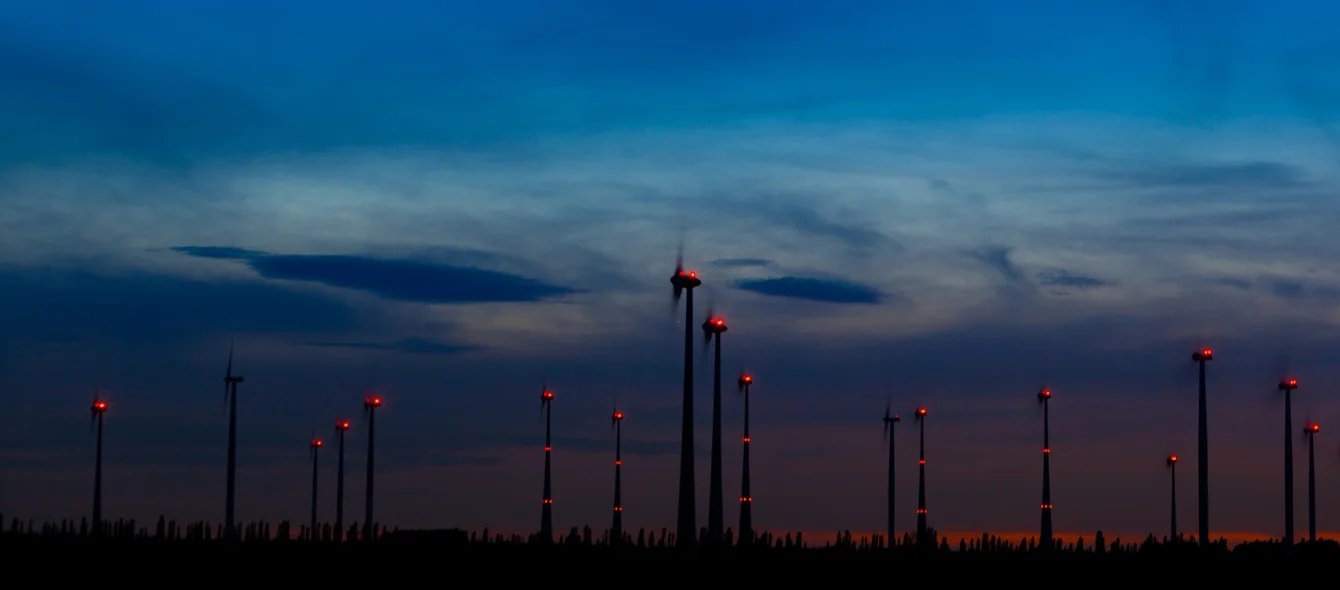Those driving cross-country in Germany at night know the flashing red lights in the night sky only too well. These are anti-collision warning lights mounted on wind turbines and are aimed at air traffic. What may only be briefly confusing to passing drivers, however, is a nuisance for some locals. But this annoyance shall soon be a thing of the past.
Following a decision by the German Upper House of Parliament, which was also approved by the German Cabinet in April, the night sky should soon become notably darker. Now, the red flashing lights are to only illuminate when a flying object is in the vicinity; a decision which should help increase public acceptance of wind farms.
Warning lights only when necessary
Above a certain height, wind turbines are equipped with anti-collision warning lights, officially referred to as hazard beacon systems. These are designed to alert approaching airplanes and helicopters at night and during low-visibility conditions such as fog. However, the continuous reddish flashes during darkness or fog are perceived as a nuisance by some local residents, especially those living near farms with numerous wind turbines.
With the German Upper House’s decision, what has been termed ‘on-demand night-time marking’ will become mandatory for wind turbines. The red signal lights are to be connected to a detector, which switches on the warning light as soon as it senses an approaching aircraft. According to estimates, this could reduce light pollution by 95 percent, thus keeping the disturbance to locals to a minimum. By 1 July 2021, all wind turbines are to be equipped with a suitable system.
According to media reports, the new regulation will apply to all wind turbines with a total height of more than 100 metres. This means more than 17,500 German turbines would need to be refitted nationwide.
This is an example of how the wind energy industry is responding to the concerns of local residents and environmentalists and demonstrates how wind turbines are helping to ensure sufficient air traffic safety.
Photo credit: shutterstock.com, Bildagentur Zoonar GmbH
